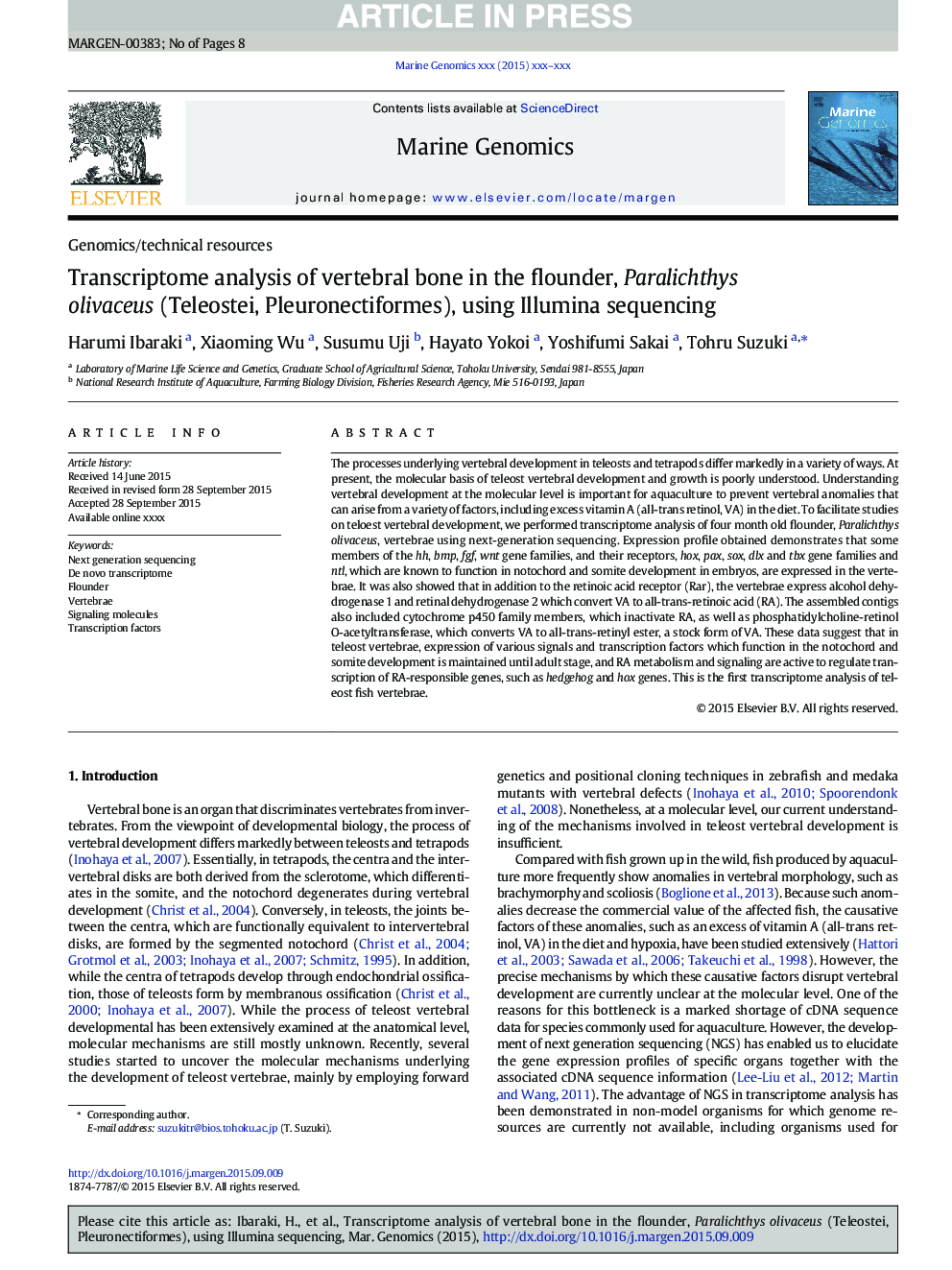| Article ID | Journal | Published Year | Pages | File Type |
|---|---|---|---|---|
| 10877915 | Marine Genomics | 2015 | 8 Pages |
Abstract
The processes underlying vertebral development in teleosts and tetrapods differ markedly in a variety of ways. At present, the molecular basis of teleost vertebral development and growth is poorly understood. Understanding vertebral development at the molecular level is important for aquaculture to prevent vertebral anomalies that can arise from a variety of factors, including excess vitamin A (all-trans retinol, VA) in the diet. To facilitate studies on teloest vertebral development, we performed transcriptome analysis of four month old flounder, Paralichthys olivaceus, vertebrae using next-generation sequencing. Expression profile obtained demonstrates that some members of the hh, bmp, fgf, wnt gene families, and their receptors, hox, pax, sox, dlx and tbx gene families and ntl, which are known to function in notochord and somite development in embryos, are expressed in the vertebrae. It was also showed that in addition to the retinoic acid receptor (Rar), the vertebrae express alcohol dehydrogenase 1 and retinal dehydrogenase 2 which convert VA to all-trans-retinoic acid (RA). The assembled contigs also included cytochrome p450 family members, which inactivate RA, as well as phosphatidylcholine-retinol O-acetyltransferase, which converts VA to all-trans-retinyl ester, a stock form of VA. These data suggest that in teleost vertebrae, expression of various signals and transcription factors which function in the notochord and somite development is maintained until adult stage, and RA metabolism and signaling are active to regulate transcription of RA-responsible genes, such as hedgehog and hox genes. This is the first transcriptome analysis of teleost fish vertebrae.
Keywords
Related Topics
Physical Sciences and Engineering
Earth and Planetary Sciences
Earth and Planetary Sciences (General)
Authors
Harumi Ibaraki, Xiaoming Wu, Susumu Uji, Hayato Yokoi, Yoshifumi Sakai, Tohru Suzuki,
